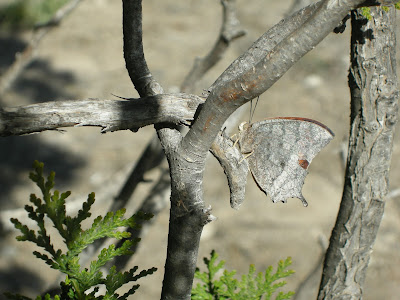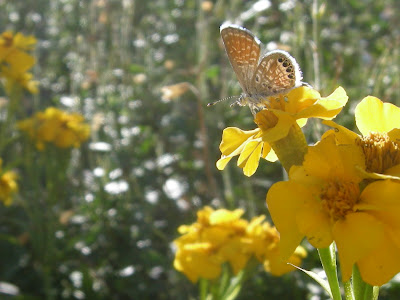Big Bend N.P. (east) [TXBG]
Texas Region
29.1833°, -103.0°
Christmas Bird Count
Count Year: 111

Rio Grand overlook near Rio Grande Village; not taken during the count.
CW = count week
PS = present for some time
GD = good details
Species / Number
Wood Duck (Aix sponsa) 4
Gadwall (Anas strepera) 11
Mallard (Anas platyrhynchos) 3
Mexican Duck (Anas platyrhynchos) 13
Green-winged Teal (Anas crecca) 24
duck sp. (Anatinae) 10
Lesser Scaup (Aythya affinis) 1
Scaled Quail (Callipepla squamata) 50
Pied-billed Grebe (Podilymbus podiceps) 1
Great Blue Heron (Blue form) (Ardea herodias) 0 0 CW
Green Heron (Butorides virescens) 2
Black Vulture (Coragyps atratus) 2
Sharp-shinned Hawk (Accipiter striatus) 2
Cooper's Hawk (Accipiter cooperii) 3
Red-tailed Hawk (Buteo jamaicensis) 5
Buteo sp. (Buteo) 1
American Kestrel (Falco sparverius) 2
Virginia Rail (Rallus limicola) 0 0 CW
Sora (Porzana carolina) 1
American Coot (Fulica americana) 3
Killdeer (Charadrius vociferus) 7
Spotted Sandpiper (Actitis macularia) 6
Wilson's Snipe (Gallinago delicata) 3
White-winged Dove (Zenaida asiatica) 17
Mourning Dove (Zenaida macroura) 1
Common Ground-Dove (Columbina passerina) 5
Greater Roadrunner (Geococcyx californianus) 5
Great Horned Owl (Bubo virginianus) 1
Anna's Hummingbird (Calypte anna) 2
hummingbird sp. (Trochilidae) 3
Belted Kingfisher (Ceryle alcyon) 2
Green Kingfisher (Chloroceryle americana) 1
Golden-fronted Woodpecker (Melanerpes aurifrons) 9
Yellow-bellied Sapsucker (Sphyrapicus varius) 2
Ladder-backed Woodpecker (Picoides scalaris) 7
Northern Flicker (Colaptes auratus) 1
Northern (Red-shafted) Flicker (Colaptes auratus) 3
Tufted Flycatcher (Mitrephanes phaeocercus) 1 PS
Gray Flycatcher (Empidonax wrightii) 3
Black Phoebe (Sayornis nigricans) 14
Eastern Phoebe (Sayornis phoebe) 19
Say's Phoebe (Sayornis saya) 21
Vermilion Flycatcher (Pyrocephalus rubinus) 5
Ash-throated Flycatcher (Myiarchus cinerascens) 2
Loggerhead Shrike (Lanius ludovicianus) 4
Common Raven (Corvus corax) 14
Verdin (Auriparus flaviceps) 19
Cactus Wren (Campylorhynchus brunneicapillus) 2
Rock Wren (Salpinctes obsoletus) 26
Canyon Wren (Catherpes mexicanus) 2
Carolina Wren (Thryothorus ludovicianus) 1
Bewick's Wren (Thryomanes bewickii) 7
Marsh Wren (Cistothorus palustris) 6
Golden-crowned Kinglet (Regulus satrapa) 3
Ruby-crowned Kinglet (Regulus calendula) 23
Blue-gray Gnatcatcher (Polioptila caerulea) 8
Black-tailed Gnatcatcher (Polioptila melanura) 32
Hermit Thrush (Catharus guttatus) 2
Gray Catbird (Dumetella carolinensis) 1 GD
Northern Mockingbird (Mimus polyglottos) 21
Brown Thrasher (Toxostoma rufum) 2
Curve-billed Thrasher (Toxostoma curvirostre) 3
Crissal Thrasher (Toxostoma crissale) 3
American Pipit (Anthus rubescens) 13
Orange-crowned Warbler (Oreothlypis celata) 8
Yellow-rumped Warbler (Dendroica coronata) 25
Yellow-rumped (Audubon's) Warbler (Dendroica coronata) 6
Yellow-rumped (Myrtle) Warbler (Dendroica coronata) 2
Common Yellowthroat (Geothlypis trichas) 8
Canyon Towhee (Melozone fuscus) 1
Black-throated Sparrow (Amphispiza bilineata) 29
Savannah Sparrow (Passerculus sandwichensis) 4
Song Sparrow (Melospiza melodia) 4
Lincoln's Sparrow (Melospiza lincolnii) 1
Swamp Sparrow (Melospiza georgiana) 6
White-crowned Sparrow (Zonotrichia leucophrys) 4
sparrow sp. (Emberizinae) 1
Northern Cardinal (Cardinalis cardinalis) 13
Pyrrhuloxia (Cardinalis sinuatus) 25
House Finch (Carpodacus mexicanus) 185
Weather & Effort
Count Date: Dec 29, 2010
Number of Participants: 17
Number of Party Hours: 35.0
Species Reported: 74
Low Temperature: 33
High Temperature: 80
AM Weather: Clear
Rain: None
Snow: None
PM Weather: Clear
Rain: None
Snow: None













































